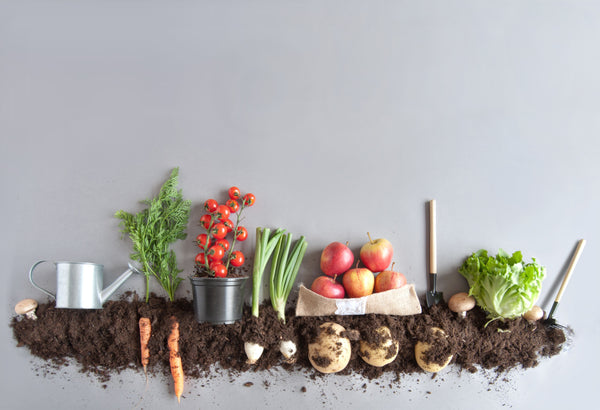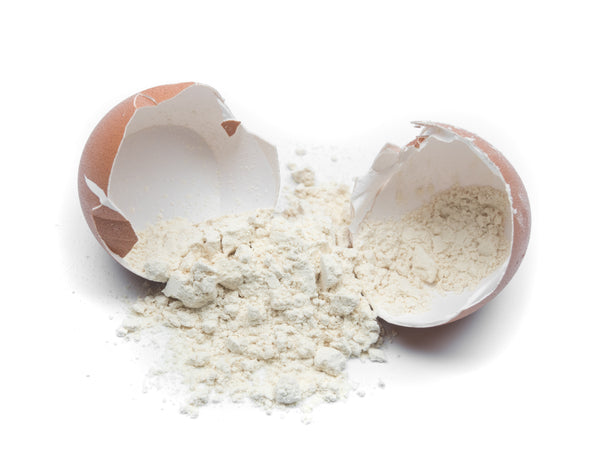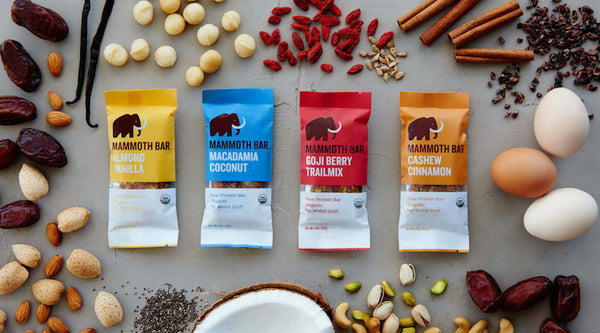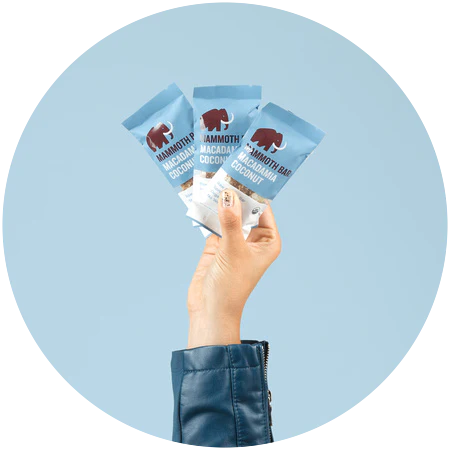Your Cart is Empty
We’re nuts about nuts- and you should be, too
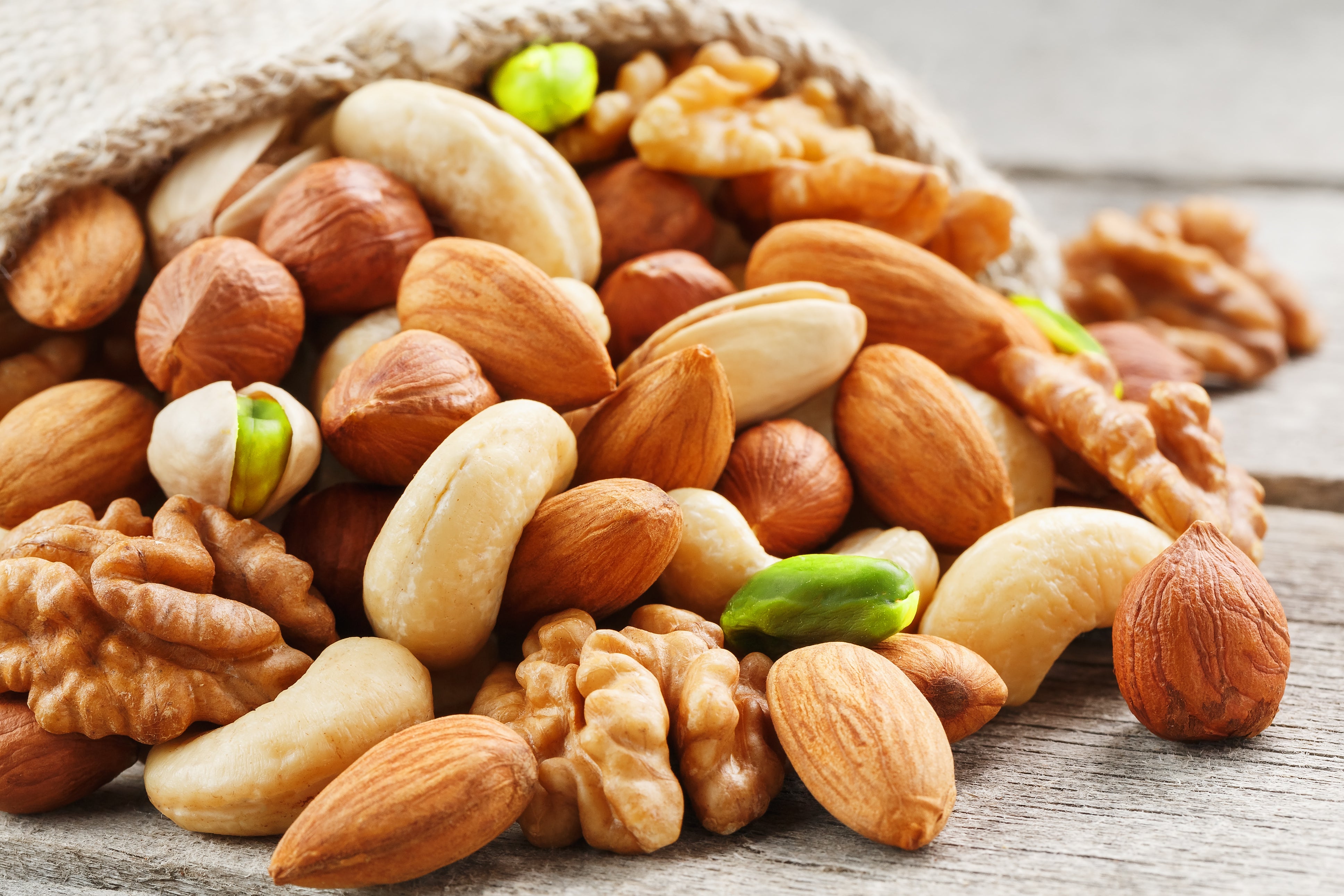
Nuts may just be the most super of the superfoods. They taste delicious, you don’t have to cook them, and there’s tons of choices (there are over 50 different kinds in the world!) Everyone knows that nuts are considered healthy, but we bet you aren't familiar with all the benefits of the tiny morsels of goodness.
Not only are nuts delicious and highly snackable, but according to the FDA, eating nuts can reduce the risk of heart disease. This is because the fat found in nuts is almost completely unsaturated, which makes it “good” fat. “Good”, or healthy, fats are a major energy source and are necessary for muscle movement and cell membrane development. Nuts are also full of naturally occurring vitamins and minerals which prevent cancer, manage diabetes, and promote overall health. Joy Bauer, RDN, says, “ A small handful can pack your diet with filling protein, fiber, unsaturated fats, and important vitamins and minerals.” (everydayhealth.com). The U.S.D.A. now recommends consuming one-and-a-half ounces (about one-third cup) of nuts four to five times a week.

Did you know that nuts have formed a major part of man’s diet for hundreds of thousands of years? In fact, the oldest walnut remains, believed to be from 50,000 B.C.E., were found on an archaeological dig in Iraq. Pistachios and almonds are referenced in the Bible, and the Romans gifted candied almonds as a symbol of fertility. Nuts have even been touted as the “first convenience food”, since they are easy to transport and can be stored for months at a time.
Each unique flavor of Mammoth Bar contains a different nut. Read on to find out the history, benefits, and fun facts of each.
Vanilla Almond- Almonds

Almonds are actually the seed of the Prunis Dulcis , also known as the almond tree. They are one of the earliest cultivated foods. The crusaders returning from the Holy Lands in the 11th and 13th centuries brought back Arabian marzipan (candy paste made from ground almonds), and it remains hugely popular today. Talk about timeless.
Benefits
- Fiber : almonds are among the highest-fiber nuts. According to the USDA, a one-ounce serving provides 4g of protein. Getting enough fiber lowers the risk of diabetes, certain cancers, and heart disease.
- Antioxidants : antioxidants reduce oxidative stress, which can damage cell molecules and increase inflammation. Antioxidants are found in the brown skin of the almond, so it’s best to skip the skinless roasted versions.
Fun facts
- Almond crops are 100% reliant on bees and honey bees to pollinate their crops. Without bees, we would not have any almonds! It’s not a one-way relationship, either. Almond pollen is the first natural food of the year for bees, and it is highly nutritious for them.
- They have a super long storage life- they can remain in the refrigerator for up to two years. This is because of their high level of vitamin E.
Macadamia Coconut- Macadamia nuts

Most people think of Hawaii when they eat macadamia nuts, but they actually derive from rainforests of Queensland, Australia. They were first introduced to Hawaii in 1881, and the island’s first crops began producing nuts in 1921. Today, most of the world’s macadamia nuts are grown in Hawaii.
Benefits
- Low glycemic index: Macadamia nuts contain more fat than other types of nuts such as peanuts or pecans. However, they’re made up of more than 75% monounsaturated fats (the “good” fats). Since they’re simple carbohydrates that do not cause blood sugar levels to spike, they qualify as a low glycemic food.
- Tocotrienols : Macadamia nuts are great for your brain, too! They contain high levels of tocotrienols, a type of vitamin E. A 2014 study found that tocotrienol supplementation protected brain cells from the effects of glutamate. Glutamate is a neurotransmitter in the brain and central nervous system. Too much of it can cause over-excitation of nerve cells, which can result in the death of cells.
Fun facts
- The macadamia nut has the hardest shell of any nut! It takes 300 pounds per square inch to crack.
- Macadamia nuts are the most expensive nut. This is because they are in high demand, because the macadamia tree takes years to bear fruit, and because the processing of the nuts is labor-intensive.
Cashew Cinnamon- Cashew

Cashews are native to Brazil, but have been produced mainly in India and Africa since the 16th century. The cashew tree, which is very tall, grows large apples that have a cashew nut attached to the bottom. You will never see shelled cashews in stores. Why? Because the outer and inner shells contain caustic oil, so they are boiled, then roasted and burned in a process of removal.
Benefits
- Copper: cashews are rich in copper, which can reduce the risk of blood diseases. Deficiencies in copper can lead to iron deficiencies such as anemia, osteoporosis, and thyroid issues.
- Magnesium: magnesium helps regulate blood pressure, increases immunity, promotes bone strength, and maintains nerve functioning. One serving of cashews provides 18% of daily recommended magnesium intake.
Fun fact
- Remember how you can’t eat cashew shells? That’s because the nut belongs to the same family as poison ivy and poison sumac. The oil that causes itchiness in humans is found in cashew shells!
Goji Berry Trail Mix: Pistachios

Similar to almonds, pistachios are technically seeds, not nuts. Pistachios were mentioned in the Bible (for being Jacob’s sons’ favorite) and legend says that they were among the Queen of Sheba’s favorite foods. They did not arrive in America until the late 1800’s, and were not popularized as a snack food until the 1930’s. The entirety of America’s pistachio production happens in three western states: California, New Mexico, and Arizona.
Benefits
- Lutein and zeaxanthin: you may never have heard of these antioxidants, but they’re very important to bodily functioning. They are a major contributor to eye health, protecting eyes from blue light and muscular degeneration caused by aging. If you do not receive enough of these, central vision can be damaged or lost. Good thing pistachios are loaded with them!
- Weight management: pistachios are one of the lowest-calorie nuts. One ounce of pistachios has 159 calories, compared to 185 in an ounce of walnuts and 190 in pine nuts. What’s more, protein comprises a whopping 20% of the nut. In a 2010 study, one group ate two ounces of pistachios as an afternoon snack every day. The control group ate two ounces of pretzels at the same time daily. The group that ate pistachios saw double the reduction in body mass index, proving that the nuts are an optimal sustainable snack. (Li, Zhaoping, et al.).
Fun facts
- In China, pistachios are nicknamed “the happy nut”, while in Iran they are called “the smiling nut”. Good vibes!
- Ever wonder why pistachios are green and purple? It’s because of their high antioxidant content.

References
Li, Zhaoping, and Rubens Song. “Pistachio Nuts Reduce Triglycerides and Body Weight by Comparison to Refined Carbohydrate Snack in Obese Subjects on a 12-Week Weight LOSS Program.” Journal of the American College of Nutrition , U.S. National Library of Medicine, https://pubmed.ncbi.nlm.nih.gov/20833992/.
“15 Fun Facts about Nuts You Probably Don't Know.” Anuts.com , 20 Apr. 2018, https://www.anuts.com/blog/15-fun-facts-about-nuts-you-probably-dont-know/.
Mann, Michele Price. “History of Nuts.” HowStuffWorks , HowStuffWorks, 15 Nov. 2007, https://recipes.howstuffworks.com/history-of-nuts.html.
Bender, Rachel Grumman, et al. “Why You Should Go Nuts for Nuts.” EverydayHealth.com , https://www.everydayhealth.com/diet-and-nutrition/0406/why-you-should-go-nuts-for-nuts.aspx.
